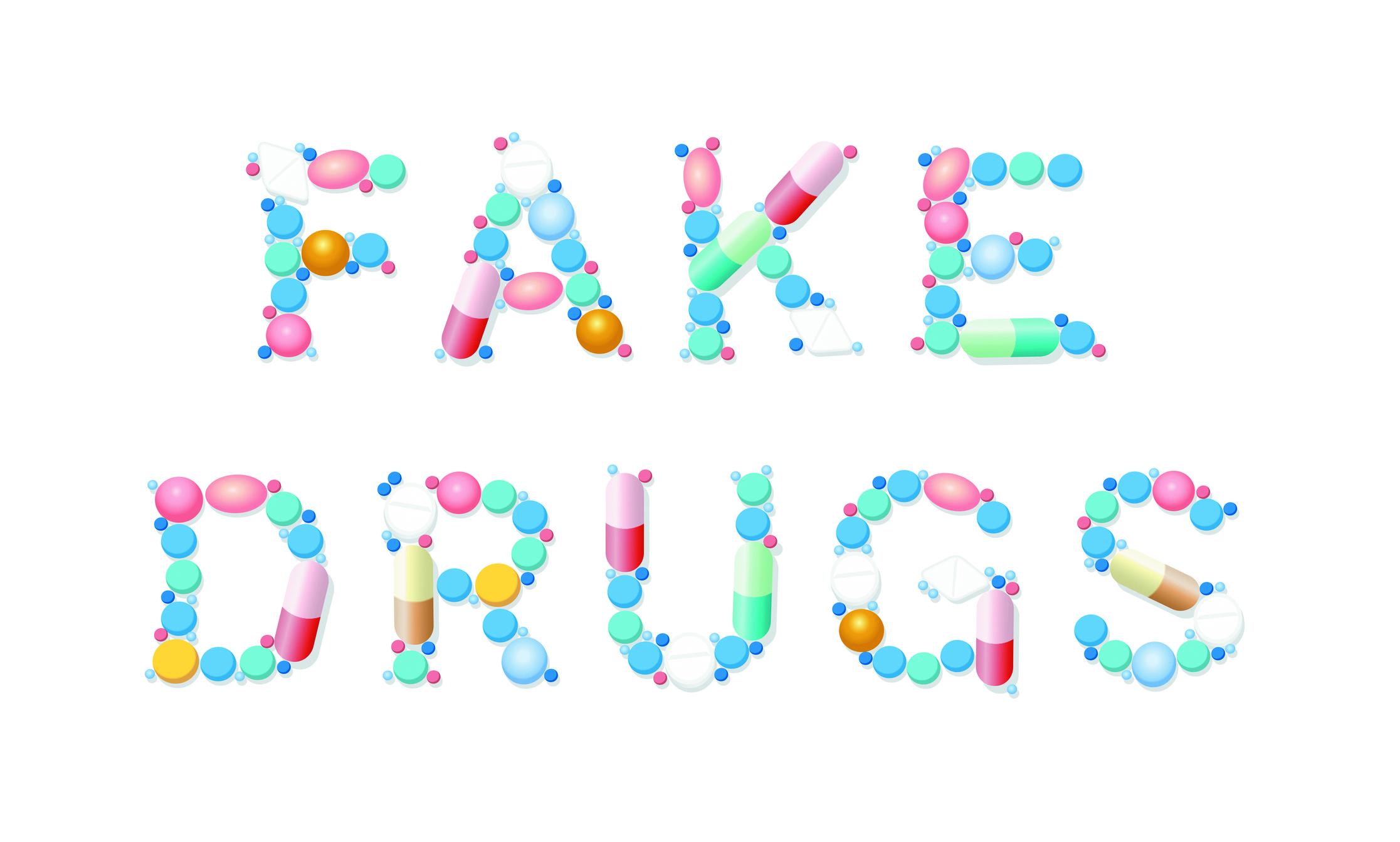As the cost of drugs skyrockets in the United States, Americans are increasingly turning to the Internet to look for better prices. Tens of thousands of online pharmacies advertise discounted drugs, on-site prescriptions, and even access to controlled drugs with no prescription at all. But in a large percentage of cases, what they’re really offering is counterfeit drugs.
Chalk dust to concrete
Counterfeit medications may contain incorrect, insufficient, or inactive ingredients, active ingredients that are different from those described on the package, and a wide range of impurities, such as road paint, floor wax, rat poison, concrete, boric acid, road tar, and antifreeze. They may be real drugs that have expired or contain nothing but chalk dust. These counterfeit components of a medication may cause the drug to have no effect, a negative effect, or even to be lethal.
These drugs span the therapeutic landscape and include lifestyle medications, such as those for weight loss and erectile dysfunction, anesthetics, pain medications, contraceptives and fertility treatments, drugs for diabetes, high cholesterol, high blood pressure, HIV, hepatitis, malaria, and cancer, heart medications, psychotropics, antibiotics, generic drugs, over-the-counter medications, herbal remedies, and medical devices.
Widespread issues
The problem isn’t limited to just a few rogue players. The National Association of Boards of Pharmacy (NABP) reports that 62 percent of medicines purchased online are fake or substandard and less than 5 percent of the estimated 35,000 pharmacies you can find online comply with U.S. laws and practice standards. Half offer foreign or non-FDA-approved drugs, one-quarter list a physical address outside of the United States, and 42 percent have server locations in foreign countries.
Canadian pharmacies are a popular choice for Americans seeking safe and affordable drugs, but they’re often not what they seem: The FDA found that 85 percent of the online pharmacies purporting to be in Canada were based in 27 other countries. India, China, Vietnam, Indonesia, Pakistan, and the Philippines appear to be the main producers of counterfeit pharmaceuticals.
Even physicians have been duped into buying counterfeit drugs. In 2015, the FDA contacted close to 1,000 physicians and medical practices in 48 different states to let them know they may have purchased a counterfeit cancer drug called bevacizumab (Avastin). Investigators traced some of the counterfeits to Montana Health Care Solutions, a pharmaceutical distributor owned by a Canadian company and a British citizen, which imported the fake drug from Turkey and sold it to doctors at low prices.
Canadian pharmacy drug differences
Even if you buy medications from a Canadian pharmacy, you’re not guaranteed to get what you expect. In fact, the official-sounding Canadian International Pharmacy Association (CIPA) website is itself questionable. The CIPA website claims to list “certified” Internet drug access sites; however, the pharmacies listed on that site have not been verified by independent and valid inspections. Many of the listed locations sell drugs that are sourced from unreliable countries and have never had to pass through Canada’s equivalent of the FDA (Health Canada) regulatory process for assurance of safety and efficacy.
The NABP notes that there are no Canadian online pharmacies that consistently dispense Health Canada-
approved medicines to American customers: The drugs you buy from a Canadian pharmacy are not the same ones a Canadian is getting at the pharmacy counter.
How to protect yourself
If you’re looking to save money on medications, before you go online, talk to your physician and pharmacist to see if they can offer alternatives such as generic or therapeutically equivalent medications. Look into pharmaceutical company assistance and other discount pharmacy programs, such as www.GoodRx.com. Lastly, compare prices at different pharmacies, as costs can vary dramatically.
Avoid rogue pharmacies
Don’t shop from an online pharmacy site that engages in any of the following practices:
- does not require a prescription
- does not provide verifiable contact information
- sells prescriptions after a patient answers only a few health questions
- does not fill orders through licensed pharmacies
- does not have a licensed pharmacist dispensing prescriptions
- offers to sell controlled substances
- does not protect personal and financial information, as rogue pharmacies are increasingly stealing information for identity theft
- Do not use www.cipa.com to verify Canadian pharmacies.
DEA Issues Warning
In September 2021, the U.S. Drug Enforcement Agency (DEA) issued a public safety alert warning of an “alarming increase” in lethal counterfeit pills containing fentanyl or methamphetamine. More than 9.5 million counterfeit pills were seized by September 2021, which was more than the prior two years combined. Further, there’s an increasing number of counterfeit pills that contain at least two milligrams of fentanyl, which is considered a lethal dose. These pills, which look identical to drugs like oxycodone (OxyContin, Percocet), hydrocodone (Vicodin), alprazolam (Xanax), and amphetamines (Adderall) are mostly being made in clandestine Mexican laboratories using chemicals from China and India.
“Reports of deaths from counterfeit opioids often portray the victims as street drug addicts looking for a high. While no person deserves to die from counterfeit opioids, we need to better understand all of the issues that may lead to patients seeking these opioid medications through the black market,” Mark Coggins, PharmD, CGP, FASCP, wrote in Today’s Geriatric Medicine. Intense scrutiny of opioid prescribing has led many physicians to stop prescribing the drugs entirely, even to patients who have responsibly used them for months or years. In some cases, patients weren’t properly weaned off or given other suitable treatment options to manage their pain. “As scenarios like this occur, more patients are likely to turn to risky online pharmacies and street dealers in an attempt to obtain relief,” Dr. Coggins notes.


